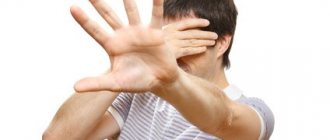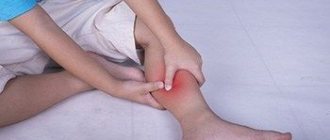Effective help for dizziness, first of all, depends on correct diagnosis and identifying the true causes of dizziness. Dizziness is the second reason after headache for visiting a neurologist. It occurs in more than 80 different neurological, cardiac, mental and other diseases. To successfully treat dizziness, it is necessary to correctly determine the true causes of these symptoms.
To identify the causes of dizziness, it is necessary to correctly carry out differential diagnosis. We pay special attention to diagnostics. Experienced doctors at the clinic will be able to correctly assess a person’s condition, select the right treatment for dizziness, and carry out it efficiently.
Unique hospital replacement methods of rehabilitation therapy used in the Brain Clinic allow you to quickly restore the functions of the nervous system and stabilize a person’s condition.
Call!
We help in the most severe cases, even if previous treatment did not help! There are four main types of dizziness.
Types of dizziness
- Vestibular vertigo
- Feeling lightheaded
- Feeling of impending loss of consciousness
- Instability
Dizziness in diseases of the nervous system
Vestibular vertigo is a sensation of imaginary rotation of objects around the patient or the patient himself in space.
This dizziness is caused in most cases by damage to the vestibular apparatus.
Other types of dizziness are symptoms of other diseases, such as orthostatic hypotension, polyneuropathy, anxiety disorders, etc.
Vestibular vertigo is caused by damage to the cerebral or peripheral parts of the vestibular system. V.G. more often it is paroxysmal, episodic, often accompanied by nausea, vomiting, noise and ear congestion, decreased hearing and loss.
Tablets for vestibular vertigo
Drugs for vestibular vertigo are Betaserc, Betagistin, Tagista, Vestibo, as well as drugs that support the endocrine system, the heart, and reduce blood pressure. Betaserc improves blood circulation in the brain and promotes the functioning of the vestibular apparatus. Betahistine is often used in complex treatment; it helps with nausea and vomiting. Tagista improves blood circulation in the brain and reduces lymph pressure in the labyrinth of the inner ear. A stable effect is achieved after a month of treatment. Vestibo improves blood circulation in the inner ear and brain; the drug is used in complex therapy.
Causes of dizziness
The main causes of dizziness are benign paroxysmal positional vertigo, Meniere's disease, vestibular neuronitis, vestibular migraine, vascular diseases of the brain (stroke, transient attack in the arteries of the vertebrobasilar system). A carefully collected anamnesis, analysis of the patient’s complaints, and instrumental studies will help diagnose these diseases. There are several common causes of dizziness.
Common causes of dizziness
- Vascular pathology (congenital or acquired);
- Brain concussion;
- Trauma to the cervical and thoracic spine;
- Osteochondrosis of the cervical and thoracic spine;
- Physical inactivity;
- VSD syndrome;
- Toxic and discirculatory encephalopathy;
- Intervertebral hernia;
- Listez;
- Birth injury
- Various mental disorders.
Mechanisms of maintaining balance
The mechanisms for maintaining balance in humans include: the vestibular, visual systems, deep and superficial sensitivity. All information is integrated in the central nervous system (CNS) and is modulated by the activity of the reticular formation, the extrapyramidal system of the brain, and the frontotemporal lobes of the cerebral hemispheres. The primary role is played by the vestibular receptors; they determine the forces of gravity and translate information into impulses that are deciphered by the brain (Luxon, 1984). As a result of this, a person is aware of the position of the head and body in space, information is available to him that controls postural movements. The activity of the vestibular nuclei (superior, lateral, medial and inferior) is modulated and integrated by multiple afferent inputs (Brodal, 1974). It is known that the vestibular nuclei are connected with five physiological systems: the oculomotor nuclei through the longitudinal medial fasciculus by multisynaptic connections with the reticular formation; the motor part of the spinal cord through the reticulospinal tract and partly the medial longitudinal fasciculus; cerebellum; the autonomic nervous system, so a “floor” in this branched system in any department can lead to a feeling of dizziness and loss of balance.
Diagnosis and help for dizziness
Accurate diagnosis of the causes of dizziness makes it possible to choose the most adequate treatment tactics.
Every person has experienced it at least once in their life. Dizziness usually takes us by surprise; it can happen while driving, on public transport, or while working.
Differential diagnosis
Depending on the medical history and examination collected by the doctor, a number of examinations are prescribed to identify the cause of dizziness. Among the examination methods used for dizziness in a patient are MRI of the brain in T2 mode or with intravenous contrast, ultrasound of blood vessels, MRI or x-ray of all parts of the spine, electroencephalography, electromyography. Treatment After undergoing a full examination and identifying the real cause of dizziness, you can begin to treat it.
How to treat vestibular vertigo
Dizziness is a common complaint among patients about feeling unwell. Women and the elderly most often suffer from dizziness. Depending on the cause of dizziness, the doctor prescribes treatment. Treating dizziness is a difficult task for a doctor. He refers the patient for examination to determine whether dizziness is caused by diseases. The patient is prescribed symptomatic treatment, which helps to remove symptoms - nausea, vomiting, and stop attacks of dizziness. Vestibular suppressors are used to stop attacks. To prevent attacks from developing, your doctor may prescribe anticholinergic drugs. Such drugs are prescribed with caution to elderly people due to side effects - hallucinations, amnesia, they can cause urinary retention and psychosis in an elderly patient. Some types of antihistamines and benzodiazepines are also prescribed to enhance the inhibitory response of GABA to the patient’s vestibular system.
Help and treatment for dizziness
There are general principles of treatment, prevention and first aid for dizziness:
- Drug therapy, which usually includes angioprotectors (drugs that improve vascular function), neuroprotectors and neurotrophic drugs. In case of severe dizziness or fainting, it is better for the patient to immediately call an ambulance team and receive treatment in a hospital setting.
- Physiotherapy is equivalent in effect to drug therapy and is indicated for dizziness. It is usually prescribed in parallel with neurometabolic therapy, which significantly enhances the therapeutic effect in the treatment of dizziness and reduces the risk of recurrence of the disease. Significantly relieves the condition in a few sessions. Typically, a rehabilitation therapy doctor prescribes a course of ten procedures that must be attended daily or every other day.
- Neck massage and manual therapy can also sometimes be prescribed for dizziness.
- Osteopathic correction is prescribed with caution, as it may have contraindications for some disorders.
- Acupuncture - prescribed with caution, as it has many contraindications in the presence of dizziness.
- Contrast shower - as prescribed by a doctor.
- Exercise therapy - under the supervision of a doctor.
- Aerobic physical activity is strictly dosed.
Dizziness has become the norm today for city dwellers. The reason for this is most often not hereditary or vascular pathology, but our lifestyle and high psychophysical stress (stress). In addition, a sedentary lifestyle plays a big role in the development and manifestation of dizziness; computers, TV, smartphones, tablets and cars have become our constant companions.
Treatment in Moscow
The best treatment for vestibular disorders is considered to be exercises for dizziness or vestibular rehabilitation. Vestibular rehabilitation is carried out in many special centers, including the rehabilitation center of the Yusupov Hospital. Therapeutic gymnastics is carried out by an instructor, classes are developed individually for each patient. A preliminary examination by a neurologist will help determine the cause of dizziness, and the doctor will prescribe effective drug treatment. A neurologist will tell you what examination to undergo and how to cure vestibular vertigo during your consultation.
Preventive measures
To reduce your risk of dizziness, follow these tips:
- watch your diet, give up exhausting diets and hunger strikes;
- choose comfortable clothes without tight collars, which can compress blood vessels;
- if you have heart or vascular diseases, monitor your blood pressure;
- if you get motion sickness in transport, take special tablets or mints;
- try not to stand up suddenly or make sudden movements of your head;
- eat foods rich in iron.
Dizziness can occur for various reasons, but only a doctor can determine the true cause and prescribe effective treatment. Do not self-medicate. Remember that vertigo may indicate the development of serious diseases of the brain or spinal cord.
How to help an older person if he has dizziness
To prevent a person from falling during dizziness, you need to do the following:
- Help him walk to the bed and lay him on his back.
- If the older person's limbs are cold, warm them with slow warming movements.
- Apply a cold water compress to your forehead.
- Provide air access by opening the window.
- Give a mug of warm sweet tea to drink.
- If an older person is taking medication for vertigo, they should take it.
In some cases, inhaling ammonia vapor will help relieve dizziness.
Dizziness in the daily practice of a doctor
The problem of diagnosing and treating vestibular disorders is one of the most pressing in modern medicine, which is determined by the high incidence rate and insufficient effectiveness of existing treatment methods. Among the reasons for visiting doctors of various specialties, it is 3–4% and 10%, respectively, to otolaryngologists and neurologists [1]. In a survey of more than 20 thousand people aged 18 to 64 years, it was found that over the past month more than 20% have experienced dizziness, of which more than 30% have suffered from dizziness for more than 5 years [2]. The prevalence of dizziness in the population is about 25%, and among the elderly - 80% [3].
Dizziness is divided into vestibular and non-vestibular, otherwise it is interpreted as systemic or non-systemic. It is known that systemic dizziness is associated with irritation of certain areas of the vestibular analyzer and, depending on the level of damage, can be peripheral or central. Peripheral vestibular vertigo (vertigo) occurs when the sensory elements of the ampullary apparatus and vestibule, vestibular ganglion and nerve conductors of the brain stem are damaged. Central vestibular vertigo occurs when there is damage to the connection with the vestibular nuclei in the brain stem, disruption of connections with the cerebellum, medial longitudinal fasciculus, oculomotor nuclei and their own connections, disruption of the vestibulospinal and vestibuloreticular connections (tract), as well as connections with the cerebral cortex [4] .
The most common cases of systemic dizziness can be divided into three groups:
1) dizziness accompanied by hearing loss; 2) dizziness not accompanied by hearing loss; 3) dizziness with central neurological symptoms [5].
In the event of acute rotational vertigo, it is important to exclude life-threatening conditions - cerebral circulatory disorders in the vertebrobasilar arterial system, the symptoms of which vary and depend on which artery is occluded.
In patients with lesions in the inferior cerebellar artery, isolated rotational vertigo with fluctuating hearing loss and/or tinnitus, simulating an attack of Meniere's disease, may be observed 1–10 days before the development of cerebral infarction. Typically, dizziness during a stroke in the vertebrobasilar arterial system is combined with other neurological symptoms. However, a small lesion in the area of the cerebellar nodule or patch, the area of the exit of the VIII nerve root between the pons and the medulla oblongata, and/or the vestibular nuclei can cause isolated vertigo without accompanying manifestations. Less commonly, such symptoms can occur with damage to the dorsal insular cortex of the flocculus, and in the latter case, gaze-induced nystagmus develops [6].
The most common signs of central damage to the vestibular system are: 1) vertical nystagmus; 2) nystagmus, changing direction; 3) atypical nystagmus (especially downward) in the head shaking test; 4) asymmetric oculomotor dysfunction; 5) severe postural instability with falls. Most of these symptoms have high specificity but low sensitivity [7].
One of the tools for the differential diagnosis of central and peripheral vertigo is the Halmagi test (head impulse test) and the head shaking test, identifying vertical squint deviation (skew deviation), not associated with damage to the oculomotor nerves or their nuclei [8].
The combination of a negative Halmagi test, vertical strabismus (skew deviation), changing the direction of nystagmus and a violation of smooth vertical tracking allows us to diagnose cerebrovascular accidents in the brain stem with 100% sensitivity and 90% specificity. The head rotation test is significant for lesions in the posterior cerebellar artery basin, but has limitations and can be positive in case of blockage of the anterior cerebellar artery with the formation of a focus in the cerebellar flocculus, vestibular nuclei or the exit zone of the VIII nerve [9–12].
According to various authors, indications for neuroimaging in patients with isolated rotational vertigo are:
1) old age; 2) the presence of risk factors for vascular diseases in combination with a normal head rotation test; 3) gaze-induced nystagmus, changing direction; 4) severe ataxia with falls; 5) a combination of acute dizziness with a first-time headache, especially of the occipital localization; 6) the presence of risk factors for vascular diseases in combination with acute hearing loss [13, 14].
Clinical example 1. Patient V., 42 years old. She went to the clinic with complaints of attacks of rotational dizziness lasting up to 2–3 hours, with a feeling of objects being displaced from right to left during an attack; occur suddenly, for no apparent reason. Before an attack of dizziness, there is a feeling of “fullness” in the left ear, which disappears soon after the dizziness stops. She reported three such attacks in total.
7 months ago I consulted a neurologist with complaints of moderate noise in the left ear and slight hearing loss, which arose suddenly, against the background of complete health. Pure-tone audiometry was performed - sensorineural hearing loss of the 1st degree. After the treatment (choline alfoscerate, B vitamin complex, deproteinized hemoderivative of calf blood), she noted a complete regression of the noise; audiometry control was not carried out.
On examination there are no neurological symptoms, vestibular function at rest is compensated. Magnetic resonance imaging of the cerebellopontine angles and internal auditory canals without pathological changes. Pure-tone audiometry - increasing hearing thresholds on the left at low frequencies up to 35 dB, with a conductive component.
Diagnosis: Meniere's disease, classic form.
When making a final diagnosis of Meniere's disease, one should adhere to the modern concept of "obvious" Meniere's disease:
1) two or more spontaneous attacks of systemic dizziness lasting from 20 minutes to 12 hours; 2) audiologically confirmed hearing loss (sensorineural) at low and medium frequencies during or after an attack of systemic vertigo; 3) fluctuating auditory symptoms: hearing, subjective noise, feeling of fullness in the ear; 4) absence of other causes of systemic dizziness [16].
Acute vestibular syndrome (vestibular neuronitis and labyrinthitis) is defined by a sudden attack of intense systemic dizziness. Depending on the level of damage, hearing loss and tinnitus may occur. As a rule, the onset of symptoms is preceded by a viral illness. With these diseases, dizziness begins gradually, intensifies over several hours, and then “mild” dizziness persists for the next few days or weeks. Dizziness persists at rest, but may subjectively intensify with changes in body position. Along with dizziness, nausea, vomiting, increased sweating, and pallor are present [17].
A labyrinthine fistula is characterized by an attack of systemic dizziness or oscillopsia that occurs due to a sharp strong sound, the Valsalva maneuver, or changes in pressure in the external auditory canal, but does not depend on changes in head position [18].
Clinical example 2. Patient M., 32 years old, complains of a constant feeling of slight instability, heaviness in the head, dizziness when throwing the head back, and sometimes wakes up at night from a pronounced sensation of rotation. 3 days ago he was discharged from the neurological department, where he was diagnosed with a transient ischemic attack in the vertebrobasilar arterial system. For the first time, an attack of dizziness occurred acutely in the morning when getting out of bed, and was accompanied by palpitations, weakness, vomiting, and cold sweat. He underwent a course of treatment with vascular and neurometabolic drugs with slight improvement.
There are no focal symptoms in the neurological status. The Disc-Hallpike test on the left is a geotropic nystagmus with a rotatory component lasting 40 seconds and a latent period of 5 seconds.
Diagnosis: benign paroxysmal positional vertigo on the left (canalolithiasis of the posterior semicircular canal). After performing the Epley maneuver twice, there was complete regression of symptoms.
Benign paroxysmal positional vertigo (BPPV)
Symptoms: the occurrence of systemic dizziness when changing the position of the head: turning in bed, throwing the head back or bending forward. The duration of the episode, as a rule, is no more than a minute.
The duration of the disease varies from several days to several years, but is more often calculated in days. BPPV occurs approximately twice as often in women. With a long course of the disease, patients report changing their lifestyle and their usual actions, so as not to provoke an attack of dizziness. Many people note an imbalance in the interictal period; a number of patients experience a feeling of heaviness in the head and nausea [16].
To diagnose this condition, special positional tests are performed: Dix–Hallpike for diagnosing BPPV of the posterior semicircular canal and McClure–Pagnini for diagnosing BPPV of the horizontal semicircular canal [18]. The diagnosis of BPPV is made with a positive Dix-Hallpike test. Nystagmus that occurs during the study has a latent period of 5–20 seconds (very rarely - up to 1 minute). Dizziness and nystagmus provoked during the test decrease gradually and stop within 60 seconds. Direction of nystagmus: towards the sore ear.
If the Dix-Hallpike test is negative, it is recommended to perform a test for the lateral (horizontal) semicircular canal of McClure-Pagnini [17].
One of the most common complaints in patients with migraine (9–14%) is dizziness. It can last from a few seconds to several days, and may not be accompanied by a headache [19].
Diagnosis criteria for vestibular migraine:
1) episodic vestibular symptoms; 2) migraine according to IHS (international headaches society) criteria; 3) at least two of the following migraine symptoms occurring during an attack of dizziness: migraine headache, photophobia, sound sensitivity, or visual or other aura; 4) other causes of vestibular vertigo are excluded [19].
In the rapid diagnosis of rotational vertigo, an internist can be helped by the scheme “Acute systemic vertigo (without other neurological symptoms)” (Fig.) [20].
Treatment of acute vestibular syndrome involves the use of antiemetics and vestibular suppressants. The action of the latter is aimed at reducing the asymmetry of vestibular tone and, thus, alleviating dizziness. However, their use is limited to a few days, since the drugs slow down the formation of compensatory mechanisms in acute peripheral damage to the vestibular apparatus. The main groups of drugs used for acute dizziness: anticholinergics, antihistamines, antidopaminergics and benzodiazepines.
From the anticholinergic group, centrally acting drugs are used that act on muscarinic receptors, improving movement tolerance. The most effective is scopolamine (M3 and M5 receptors), but the duration of its use is strictly limited due to the development of dependence. Side effects: dry mouth, mydriasis, accommodation paresis, sedation, decreased reaction speed.
Among the antihistamines, H1-blockers are used, such as diphenhydramine (Diphenhydramine), cyclizine (Valoid), dimenhydrinate (Dramina), meclozine (Bonin) and promethazine (Pipolfen). The mechanism of action is based on inhibition of activation of central cholinergic connections. Additionally, they have an anticholinergic and sedative effect. Compared to anticholinergic drugs, side effects in this group are less pronounced. It should be noted that newer drugs in this group without sedation do not penetrate the central nervous system (CNS), and are therefore useless in the treatment of dizziness.
Betahistine was registered as a drug in Europe in 1970; it is a synthetic drug that has the ability to bind to H1 histamine receptors, which are located in the neuroreceptor cells of the inner ear. It has a local powerful stimulating effect, increasing the release of neurotransmitters (histamine) from the nerve endings of the receptor cells of the inner ear into the synapse. Neurotransmitters act on the precapillary sphincters, causing vasodilation of the vessels of the inner ear, increasing their permeability and thereby normalizing intralabyrinthine pressure. In addition to affecting the receptors of the inner ear, betahistine affects the receptors of the vestibular nuclei located in the medulla oblongata, reducing activity and excitability, which helps to stop dizziness.
Dopamine antagonists are used to treat nausea and vomiting in patients with acute dizziness. The antiemetic effect is due to blocking dopamine receptors in the vomiting center of the brain stem. Some antihistamines (H1-blockers), such as promethazine, have additional dopamine-blocking effects.
The action of benzodiazepines is mediated by GABA, which is a neurotransmitter that inhibits vestibular function. The most commonly used drugs are diazepam, lorazepam, clonazepam and alprazolam [21].
For more than 50 years in world medical practice, doctors of various specialties have been using the complex antihomotoxic drug Vertigoheel for the treatment of dizziness [22].
Vertigohel is a multicomponent preparation containing the pharmacologically active ingredients Anamirta cocculus, Conium maculatum, Ambra grisea and Petroleum rectificatum. Numerous studies of the mechanism of action of the drug Vertigohel suggest multi-target activity in relation to vasodilation of capillaries and thereby microcirculation.
Numerous scientific studies, including randomized clinical trials, non-interventional studies (reproducing the scheme of daily work with patients) and meta-analysis, have confirmed the effectiveness of the clinical use of Vertigoheel.
A reference controlled cohort study on 774 patients was devoted to the effectiveness and tolerability of the drug Vertigohel in comparison with dimenhydrinate for dizziness of various origins. 25 patients were prescribed the drug Vertigohel (2-3 tablets 3 times a day) or dimenhydrinate (50 mg 2-3 times a day) for a course of no more than 8 weeks. Most patients had non-vestibular vertigo (visual/somatosensory or psychosomatic disorders). Presenting symptoms also included unsteadiness in gait and standing, with a tendency to fall. The second large group was represented by patients with vestibular (systemic) vertigo with manifestations of rotational vertigo, Meniere's disease or balance disorders.
The average number of attacks, their intensity and duration decreased significantly in both groups. By the end of the course of treatment, the patients also experienced relief from accompanying symptoms: nausea, vomiting, and increased sweating. The overall result of therapy was rated as “good” or “excellent” in 88% of cases in the Vertigohel group and in 87% of cases in the dimenhydrinate group. Tolerability was rated as “good” to “excellent” in 99% of cases in the Vertigohel group and in 98% of cases in the dimenhydrinate group [23].
In the period from 2009 to 2015, we observed 89 patients aged 18 to 42 years (53 women and 36 men) with peripheral vestibular vertigo, who were recommended to take 10 drops every 15 days when acute vestibular vertigo and nausea occurred. minutes (no more than 2 hours in a row) or dimenhydrinate 50–100 mg (if necessary, every 4 hours, but not more than 400 mg per day).
All patients received both drugs, but at different time intervals. The majority of patients (83 people - 93%) rated the high effectiveness of both drugs (as "good" or "excellent"), however, all patients (89 people - 100%) noted better tolerability of Vertigohel, since the lethargy and drowsiness characteristic of dimenhydrinate did not occur .
Thus, we can recommend the use of Vertigohel to patients to relieve acute vestibular crisis at home, since the drug is highly effective and is well tolerated. Thus, Vertigohel has no known interactions with other drugs, which is especially important for the treatment of elderly patients with concomitant chronic diseases.
Literature
- Oosterveld WJ The efficacy of piracetam in vertigo. A double-blind study in patients with vertigo of central origin // Arzneimittelforschung. 2000. No. 30 (11). P. 1947–1949.
- Yardley L., Britton J., Lear S., Bird., Luxon L. Relationship between balance system function and agoraphobic avoidance // Behav. Res. Ther. 1998. Vol. 33, No. 4. P. 435–439.
- Bobrov LS, Shmyrev VI, Vasil`ev AS, Morozov SP, Rudas MS 2011, No. 1 (39). S. 115–119.
- Sheremet A. S. Dizziness as a sign of damage to the vestibular analyzer // Consilium medicum. Vertigo app. 2001. pp. 3–9.
- Burton Martin J. Dizziness: features of diagnosis and treatment // Attending Physician. 1999. No. 4. pp. 58–60.
- Savitz SI, Caplan LR Vertebrobasilar disease // N Engl J Med. 2005; 352:2618–2626.
- Lee H. Isolated vascular vertigo // Journal of Stroke. 2014; 16 (3): 124–130.
- Brodsky MC Three dimensions of skew deviation // Br J Ophthalmol. 2003, Dec; 87(12):1440–1441.
- Newman-Toker DE, Kattah JC, Alvernia JE, Wang DZ Normal head impulse test differentiates acute cerebellar strokes from vestibular neuritis // Neurology. 2008; 70:2378–2385
- Cnyrim CD, Newman-Toker D., Karch C., Brandt T., Strupp M. Bedside differentiation of vestibular neuritis from central “vestibular pseudoneuritis” // J NeurolNeurosurg Psychiatry. 2008; 79:458–460.
- Kirchner H., Kremmyda O., Hufner K., Stephan T., Zingler V., Brandt T. et al. Clinical, electrophysiological, and MRI findings in patients with cerebellar ataxia and a bilaterally pathological head-impulse test // Ann NY AcadSci. 2011; 1233:127–138.
- Park HK, Kim JS, Strupp M., Zee DS Isolated floccular infarction: impaired vestibular responses to horizontal head impulse // J Neurol. 2013; 260:1576–1582.
- Lee H, Sohn SI, Cho YW, Lee SR, Ahn BH, Park BR et al. Cerebellar infarction presenting isolated vertigo: frequency and vascular topographical patterns // Neurology. 2006; 67:1178–1183.
- Kim HA, Lee H. Recent advances in central acute vestibular syndrome of a vascular cause // J Neurol Sci. 2012; 321: 17–22.
- Lopez-Escamez JA, Carey J., Chung W.-H., Goebel JA, Magnusson M., Mandalà M., Newman-Toker DE, Strupp M., Suzuki M., Trabalzini F., Bisdorff A. Diagnostic criteria for Meniere's disease. Consensus document of the Bárány Society, the Japan Society for Equilibrium Research, the European Academy of Otology and Neurotology (EAONO), the American Academy of Otolaryngology-Head and Neck Surgery (AAO-HNS) and the Korean Balance Society // Acta Otorrinolaringol Esp . 2021, Jan-Feb; 67(1), 1–7.
- Halmagyi GM Diagnosis and management of vertigo // Clinical Medicine. 2005; 5: 159–165.
- Bhattacharyya N., Baugh, RF, Orvidas L., Barrs D., Bronston LJ, DC, Cass S., Chalian AA, Desmond AL, Earll JM, Fife TD, Fuller DC, Judge JO, Mann NR, Rosenfeld RM, Schuring LT, Steiner RWP, Whitney SL, Haidar J. Clinical practice guideline: Benign paroxysmal positional vertigo // Otolaryngology–Head and Neck Surgery. 2008, 139, S47-S81.
- Huh Y.-E., Kim J.-S. Bedside Evaluation of Dizzy Patients // J Clin Neurol. 2013; 9:203–213.
- Boldingh MI, Ljøstad U., Mygland A., Monstad P. Comparison of Interictal Vestibular Function in Vestibular Migraine vs Migraine Without Vertigo // Headache: The Journal of Head and Face Pain. Vol. 53, Issue 7, p. 1123–1133.
- Vanni S., Pecci R. STANDING, a four-step bedside algorithm for differential diagnosis of acute vertigo in the Emergency Department // ACTA otorhinolaryngologica ita lica. 2014; 34:419–426.
- Singh RK, Singh M. Otorhinolaryngology Clibics // An International Journal. 2012; 4 (2): 81–85.
- Vertigoheel is the first choice drug for dizziness. Materials from the Heel company // Pharmacist. 2002, No. 20.
- Wolschner U., Strösser W., Weiser M., Klein P. Treating vertigo - combination remedy therapeutically equivalent to dimenhydrinate: results of a reference-controlled cohort study // Biol Med. 2001; 30: 184–190.
O. V. Zaitseva1, Candidate of Medical Sciences K. V. Overchenko, Candidate of Medical Sciences A. F. Khirnetkina
FSBI Scientific Center of Otorhinolaryngology FMBA of Russia, Moscow
1 Contact information
* The drug is not registered in the Russian Federation.









